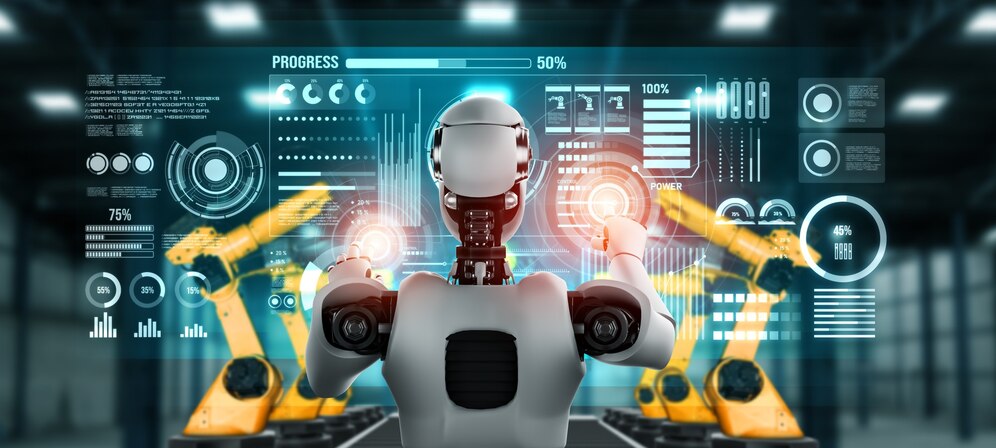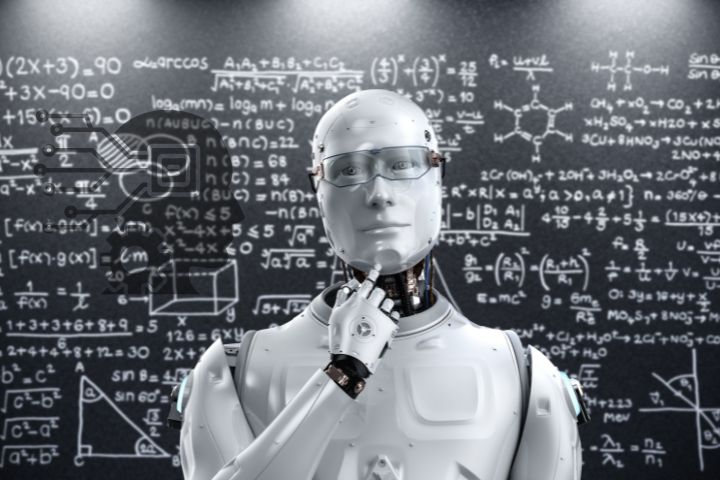How RPA and Machine Learning Work Together?

Curious about how RPA and machine learning work together to revolutionize business processes? Combining these technologies, companies are automating repetitive tasks and making smarter decisions. Imagine a virtual assistant handling routine tasks and learning and improving over time.
This powerful synergy enhances efficiency and drives innovation, making it easier for businesses to adapt and thrive in a competitive market. Dive into the fascinating world of RPA and machine learning to see how this dynamic duo is transforming the future of work.
Table of Contents
What is RPA, and how does it work?
Robotic Process Automation (RPA) is a technology that uses software robots to automate repetitive, rule-based tasks typically performed by humans. These robots can interact with various digital systems and applications to execute tasks such as data entry, transaction processing, and responding to simple customer service queries.
Imagine having a digital assistant that can handle all the mundane tasks you dread, like copying data from one spreadsheet to another or processing hundreds of invoices.
RPA works by mimicking the actions of a human interacting with software applications. It can log into applications, move files and folders, copy and paste data, fill in forms, and even scrape browsers.
The beauty of RPA lies in its simplicity and effectiveness. You don’t need to change your existing systems for it to work. Instead, these robots operate on top of your existing infrastructure, making them a flexible and scalable solution.
Whether you’re a small business or a large enterprise, RPA can help you save time, reduce errors, and free up your employees to focus on more strategic tasks.
RPA automates repetitive tasks, allowing businesses to achieve higher efficiency and accuracy. It’s like having an extra pair of hands who work tirelessly without breaks, ensuring tasks are completed faster and more consistently.
This boosts productivity and enhances job satisfaction, as employees can shift their focus to more engaging and value-added activities.
What is machine learning, and how does it work?

Machine learning is a branch of artificial intelligence that enables systems to learn from data, identify patterns, and make decisions with minimal human intervention. It’s like teaching computers to learn from experience and improve at tasks over time, similar to how humans learn.
Machine learning involves feeding large amounts of data into algorithms creating models capable of making predictions or decisions without being explicitly programmed for specific tasks.
Imagine you have a virtual chef who learns your taste preferences by analyzing your previous meal choices and recipes you’ve liked. Over time, this chef improves at suggesting dishes you’ll enjoy, adapting their suggestions based on new information.
There are three main types of machine learning: supervised learning, unsupervised learning, and reinforcement learning. In supervised learning, the algorithm is trained on labeled data, meaning it knows the correct answers during training.
For example, a model learning to recognize cats in photos is shown many images labeled “cat” or “not cat.” Unsupervised learning, on the other hand, deals with unlabeled data. The algorithm tries to find hidden patterns or intrinsic structures in the input data. A classic example is clustering customers based on purchasing behavior without knowing their shopping habits beforehand.
Reinforcement learning is like training a dog with rewards and punishments. The algorithm learns by interacting with an environment and receiving feedback based on its actions. It’s used in scenarios like game playing or robotics, where the system improves its performance by trial and error.
By continuously learning from new data, machine learning systems become more accurate and efficient over time, making them invaluable for applications like recommendation systems, fraud detection, and predictive maintenance.
How do machine learning and RPA complement each other?
RPA and machine learning create a powerful combination that enhances business processes by automating tasks and making intelligent decisions.
Here’s how they work together:
- Enhanced decision-making: Machine learning models can analyze data and make predictions, which RPA can use to execute tasks based on those insights.
- Improved accuracy: RPA can consistently handle repetitive tasks, while machine learning improves the accuracy of those tasks by learning from data patterns and reducing errors.
- Dynamic automation: RPA handles structured, rule-based tasks, while machine learning can adapt to unstructured data and changing conditions, enabling more flexible automation solutions.
- Predictive maintenance: Machine learning can predict equipment failures or maintenance needs, and RPA can schedule and execute maintenance tasks automatically.
- Customer service: Machine learning can analyze customer inquiries and provide responses, while RPA can automate delivering those responses across different channels.
- Data processing: Machine learning can extract insights from large datasets, and RPA can automate the data collection and processing steps, making the entire workflow more efficient.
- Fraud detection: Machine learning algorithms can identify potential fraud patterns, and RPA can immediately prevent fraudulent transactions or alert the relevant teams.
What is the difference between RPA and machine learning?
Machine learning and RPA are powerful technologies, but they have different purposes and distinct roles and capabilities. Here’s a breakdown of the key differences between RPA and machine learning:
Nature of tasks:
- RPA: Automates repetitive, rule-based tasks that follow a clear set of instructions.
- Machine learning: Analyzes data, identifies patterns, and makes predictions or decisions based on data.
Learning capability:
- RPA: Does not learn or adapt over time; it follows predefined rules and instructions.
- Machine learning: Continuously learns from data, improving its accuracy and effectiveness over time.
Data handling:
- RPA: Works best with structured data and processes that require minimal variability.
- Machine learning: Can handle structured and unstructured data and find patterns and insights.
Flexibility:
- RPA: Highly effective for tasks that don’t change frequently, such as data entry, form filling, and simple transaction processing.
- Machine learning: Ideal for tasks that benefit from adaptability and improvement, such as image recognition, natural language processing, and predictive analytics.
Implementation:
- RPA: Easy to implement and often requires minimal changes to existing systems.
- Machine learning: Requires substantial data and computational power, as well as expertise in data science and algorithm development.
Use cases:
- RPA: Commonly used in back-office operations, customer service automation, and routine data handling tasks.
- Machine learning: Applied in fraud detection, recommendation systems, dynamic pricing, and autonomous vehicles.
How can businesses implement RPA and machine learning?
Implementing RPA and machine learning can seem like a daunting task, but with the right steps, it can be a smooth process.
Here’s some practical advice to get started:
1. Identify the right processes:
- Look for repetitive, rule-based tasks for RPA.
- For machine learning, find tasks that involve data analysis, pattern recognition, and prediction.
2. Set clear goals:
- Define what you want to achieve with RPA and machine learning. This could be reducing manual work, improving accuracy, or gaining insights from data.
3. Choose the right tools and platforms:
- Research and select RPA and machine learning tools that fit your business needs. Some popular RPA tools include UiPath, Blue Prism, and Automation Anywhere. Platforms like TensorFlow, PyTorch, and AWS SageMaker are widely used for machine learning.
4. Start small and scale up:
- Begin with a pilot project to test the waters. Implement RPA and machine learning in one department for a specific task. Learn from this experience before rolling it out across the organization.
5. Build a skilled team:
- Assemble a team with the right mix of skills. This might include RPA developers, data scientists, and IT professionals. Training your current staff can also be a great way to build expertise.
6. Integrate with existing systems:
- Ensure your RPA and machine learning solutions work seamlessly with your current software and databases. This avoids disruptions and leverages your existing infrastructure.
7. Monitor and optimize:
- Once implemented, continuously monitor the performance of your RPA and machine learning systems. Use the data to make adjustments and improvements over time.
8. Ensure compliance and security:
- Ensure your implementation adheres to relevant regulations and has robust security measures. Protecting data and maintaining compliance is crucial.
9. Get feedback from users:
- Engage with employees who are using these systems. Their feedback can provide valuable insights into what’s working and needs improvement.
10. Plan for the future:
- Stay updated with the latest developments in RPA and machine learning. This field evolves rapidly, and keeping an eye on new trends and technologies can help you stay ahead.
Conclusion
Implementing RPA and machine learning can transform your business, driving efficiency and innovation. By combining these technologies, you streamline operations, enhance decision-making, and stay competitive.
Start small, build the right team, and continuously optimize for a future-ready, intelligent automation strategy. Your business’s potential is limitless.
Read more: Cloud-Based Quantum Machine Learning Applications
